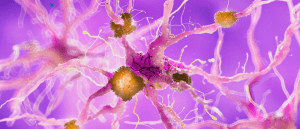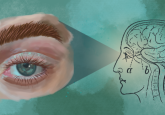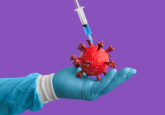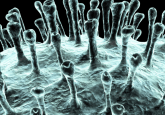Sniffing out the source influencing COVID-19 severity

An exploration of the cells and expression patterns in the nasopharynx epithelium of COVID-19 patients has revealed a key component in the varying disease severity experienced by the infected.
A distinct feature of COVID-19 throughout the pandemic has been the significant variation in individual responses to infection, with some barely noticing the infection, while others lose their lives to the disease. While blood sample studies have been conducted to explore this phenomenon, little has been done to investigate the initial site of infection: the nasopharynx.
Now, researchers at Boston Children’s Hospital, MIT (both MA, USA), and the University of Mississippi Medical Center (MI, USA) have set out to explore the impact of COVID-19 on the nasopharynx and how this impact varies with disease severity. The study provides an explanation for differing severity, offering potential solutions for severe cases.
Having identified the cells susceptible to SARS-CoV-2 infection last year, the team went a step further, mapping the infection of the nasopharynx. The study used swab samples from 35 patients who all experienced different levels of disease severity, ranging from mildly symptomatic to critically ill, intubated patients. The researchers also collected 17 samples from a control group of patients who had been intubated but didn’t have COVID-19.
Using single-cell RNA sequencing to examine every cell collected by each sample, the team were able to identify the composition of cell types making up the epithelium of the nasopharynx, which were infected with SARS-CoV-2 and which genes were being expressed. This allowed the researchers to determine how the epithelium was changing and which genes were being switched on and off in response to infection.
 How SARS-CoV-2 “opens the floodgates” for neurological infection
How SARS-CoV-2 “opens the floodgates” for neurological infection
It is well understood that SARS-CoV-2 can infect the cells of the lungs by binding to the surface receptor ACE2. However, in the brain it is unclear as to how COVID-19 can lead to severe neurological symptoms such as stroke and psychosis.
General observations of the COVID-19 positive group compared to the control group revealed that mucus generating secretory and goblet cells increased, while there was a dramatic drop in mature ciliated cells. Ciliated cells sweep the airways to clear it of mucus and debris. An increase in immature ciliated cells suggests that there is attempted compensation for this decline.
Signs of infection were observed in immature ciliated cells, specific subtypes of secretory cells, goblet cells, and squamous cells. These infected cells displayed greater expression of genes involved in an active immune response.
The most interesting findings; however, came from the comparisons within the COVID-19 positive group. The epithelial cells of patients with mild COVID-19 displayed significantly increased expression of genes regulated by type 1 interferon. This interferon alerts the wider immune system of an infection. Severe, intubated COVID-19 patients displayed a significantly muted response to type 1 interferon.
Severe patients did have an increased prevalence of macrophages and other immune cells that increase inflammatory responses in particular.
Commenting on these results, Jose Ordovás-Montañés (Boston Children’s) stated that, “Everyone with severe COVID-19 had a blunted interferon response early on in their epithelial cells and were never able to ramp up a defense. Having the right amount of interferon at the right time could be at the crux of dealing with SARS-CoV-2 and other viruses.”
The researchers posit that a nasal spray could be used to help boost the cells response to interferon, but further research is required to understand why some people’s cells have a limited interferon response and to answer the key question of, as Ordovás-Montañés puts it, “how do you make these cells more responsive?”





